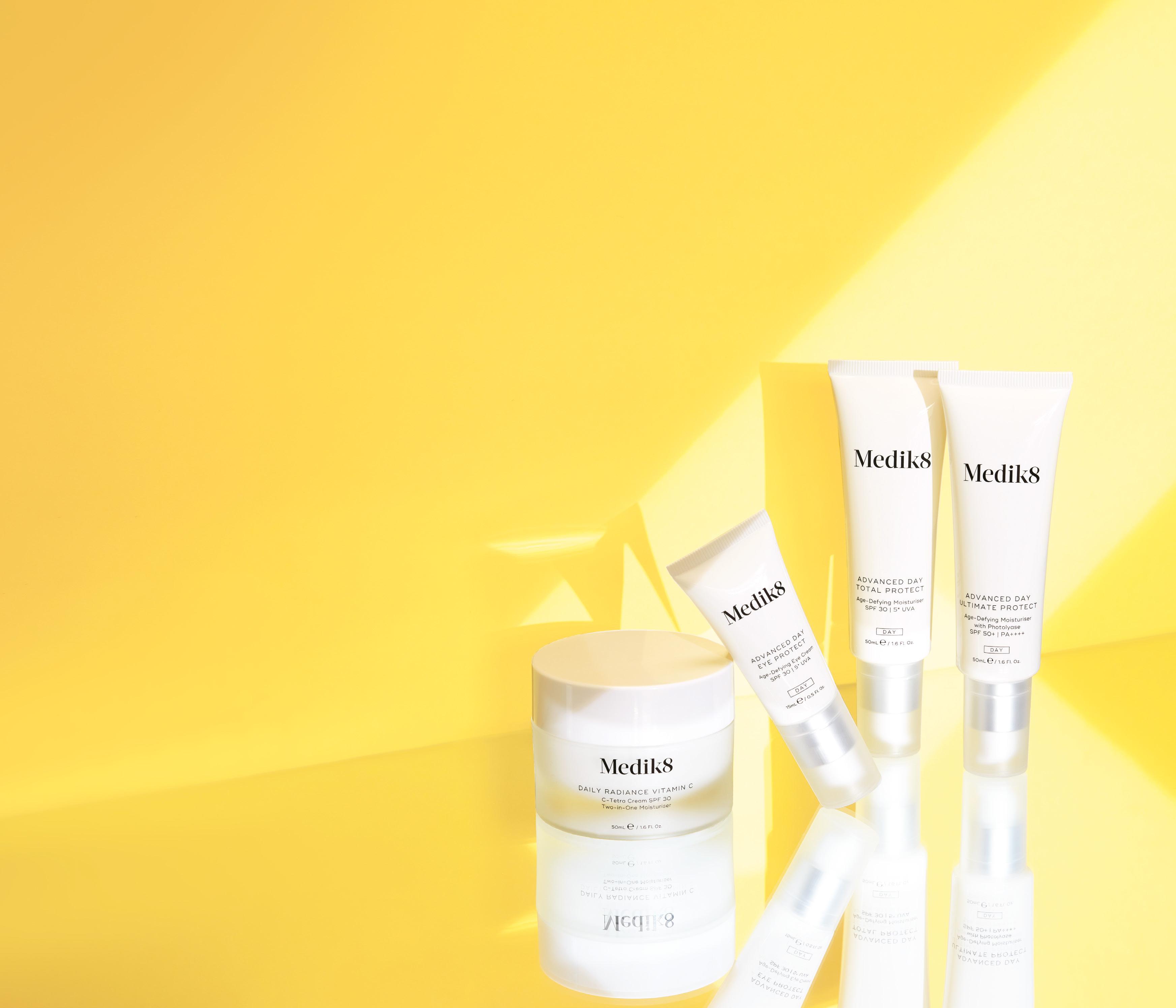
13 minute read
Using Polynucleotides
Skin stimulants
Using Polynucleotides for Skin Rejuvenation
Advertisement
Dr Agnieszka Surowiecka explores the use of injectable polynucleotides for restructuring and rejuvenating the skin
Knowledge of the ageing processes in the face is mandatory for every aesthetic practitioner. There are three primary types of ageing that can be distinguished: intrinsic (e.g hormones), mimetic (e.g muscle ageing), and extrinsic (e.g photoageing). Photoageing and other external factors lead to skin thinning, fine lines, melasma, and telangiectasias.1,2 Decline in synthesis of collagen (primarily type III, but also type I), elastin, and other extracellular proteins of the dermis results in its flaccidity. Bony resorption and loss of volume in the facial fat pads are a widely known phenomena. Laxity and ptosis, characteristic of ageing, are also a consequence of muscle thinning and contraction, as well as flaccidity of the facial ligaments. These ligaments and septa separate the individual compartments of the face. When they lose their stiffness, drooping of the tissue becomes visible.3-6
Aesthetics is a branch of medicine that is devoted to preventing changes that result from the passage of time, and to restore what has been lost. Bearing in mind the mechanics of facial ageing, the aesthetic practitioner needs to improve the quality of the face on every level. To restore age-related changes, it is necessary to rebuild lost volume, strengthen the ligaments, and improve skin quality. There is no single procedure that would allow a practitioner to achieve comprehensive rejuvenation. That is why a combined and individualised protocol needs to be introduced. In my experience, devitalised and thin skin should first be stimulated and tightened, before more invasive procedures can be administered. Polynucleotides actively fight the first signs of ageing and protect skin from damage caused by photoageing. The structure of polynucleotides (Figure 1) and aromatic rings capture free radicals,7,8 initiate DNA salvage pathways and protects fibroblasts’ DNA damage caused by UV radiation.9,10 The aim of this article is to describe non-pyrogenic resorbable gel with polynucleotides for aesthetic indications that can serve as biorevitalisant and biostimulant.
The first ‘skin boosters’ were based on small-particle hyaluronic acid (HA). Their main indication was skin enhancement and improvement of superficial wrinkles.11 ‘Skin boosters’ or skin stimulants do not restore volume loss, but are indicated to improve skin hydration, elasticity and overall quality. The market of biostimulators is rapidly developing. There are products available that are soft tissue fillers and have an additional biostimulating effects, such as fillers based on 33% or 55.7% calcium hydroxyapatite or based on polycaprolactone.12 Other biostimulators that are resorbable and are not fillers include low molecular weight and non-cross-linked HA, polypeptides, or amino acids.13,14 HA with a molecular weight below 50kD stimulates endothelial cells, and with a mass of 50-500kD it stimulates fibroblasts to produce endogenous HA and collagen through the CD44 membrane receptor.13 Polypeptides work on a ‘lock-key’ principle,14 and the available polypeptide cocktails contain such combinations as to activate selected mechanisms, for example, to prevent hair loss. Amino acid cocktails primarily nourish the extracellular matrix.15 Polynucleotide gels are not fillers, as they
P
P
P N N
N
N
N
N H N H
N H N
N H H N
H N
N H H N
N P
P
P
don’t restore volume and are completely absorbed, with a half-life of approximately three hours. Therefore, polynucleotides present the broadest spectrum of action through hydration, antioxidation and stimulation of fibroblasts. They increase the ability of skin fibroblasts to synthesise collagen, elastin and endogenous HA by ensuring an optimal extracellular environment.16 Furthermore, they stimulate the natural mechanisms of tissue reconstruction and repairand have anti-inflammatory properties.10 Polynucleotides have been used successfully in the treatment of chronic wounds, including those associated with vascular ulceration or diabetes.7,9
Mechanism of action
Polynucleotide gel is highly purified by a heat treatment process. The half-life of polynucleotides is three to three and a half hours.17 In serum, they do not bind to proteins.18 Polynucleotides are mainly degraded by non-specific nucleases. The active metabolites have capacity to activate fibroblasts’ surface receptor activity, and adding polynucleotides to fibroblast cultures stimulates their growth and proliferation. The stimulation of fibroblasts’ differentiation into myofibroblasts occurs through the activation of the CD40 receptor and the adenosine A2a receptor.7,17,19 Moreover, binding to the A2 receptor has a strong anti-inflammatory effect through the secretion of cytokines such as interleukin 10 (IL-10)17 or growth factors for fibroblasts and endothelium. Increased secretion of VEGF stimulates neoangiogenesis and significantly improves tissue healing.20-22 Moreover, after binding to the CD39 receptor, the secretion of collagen and extracellular matrix proteins is stimulated.7 Finally, the specific structure of polynucleotide molecules with free, highly hydrophilic phosphate groups ensures extended iso-osmotic hydration.8 This effect is independent of the age and condition of the skin.23 Free polyanionic groups strongly bind water molecules like an electrostatic sponge, ensuring iso-osmotic hydration of the extracellular matrix.17
Indications
The registered indications for polynucleotides include dehydrated skin with wrinkles, signs of photoageing and loss of elasticity.8,16 An Italian group of researchers have recently published indications for the use of polynucleotide-based gels.24 These are the improvement of the quality and thickening of the skin of the face and body, scar and stretch mark therapy, as well as hair loss therapy.23 The action of polynucleotides depends primarily on the structure of the particle, so the advantages should benefit patients of all ages. However, in my personal opinion, it is still a biostimulator, thus polynucleotides should be used with caution in patients under the age of 30, or with active, severe autoimmune diseases and neoplastic processes.
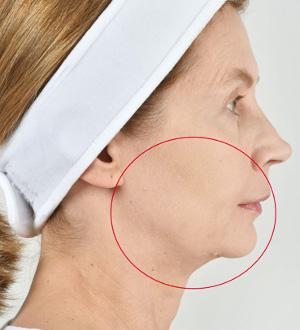
A series of three to four procedures with an interval of approximately four weeks is most often recommended.24 From my experience, the best results and global skin quality improvement is observed after four weeks from the end of the series. The first noticeable signs of skin improvement by a patient is better moisturisation of the skin, which appears a day after injection due to active metabolites. Improvement in texture, skin elasticity, flexibility, thickening, and regeneration are visible after four weeks.8,16,24 The average volume of polynucleotides used in the literature is approximately 1ml per side, leaving fine deposits of 0.05mlbut the protocols differ from the product.8,25 Polynucleotides can be successfully used for facial rejuvenation on the neck, décolletage and body, and the effects are visible after the first treatment.8,26 Polynucleotides can be also implemented in combined treatments of striae and hypotrophic scars.24 In my experience, for best results, the deposits should be injected in the deep dermis and more superficial and bigger deposits might cause transient lumping and irritation. There are several techniques that could be used, both with a needle or a blunt cannula. Linear threading, serial puncture, crosshatching or fanning can be used depending on skin quality and the practitioner’s expertise. Contraindications for the procedure include active infections, autoimmune and cancerous diseases, pregnancy and lactation.26 It is not recommended to apply high molecular and dense products (20mg/ml or 25mg/ml) to the lower eyelid area and periorbital area. The use of antiplatelet and anticoagulant drugs is a relative contraindication.27
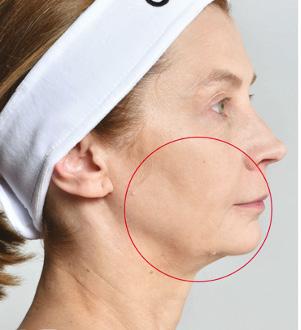
Polynucleotide chains are processed at high temperatures, ensuring purification up to 95% and, consequently, have a low content of inactive proteins and peptides.17 As a result, they are immunologically indifferent and have a very low risk of causing an allergic reaction.8 No serious adverse reactions have been reported in the available literature.25,26 The most reported reactions are redness and itching that appeared after the second or third treatments in the series. After application to the lower eyelid area, a few cases of papules were observed that lasted for 14 days.24,27 Before the injection of polynucleotides, the patient should be carefully examined, and the injection points determined. In the case of a visible percutaneous vessel or a palpable pulse in a designated area, the site should be moved. After inserting the needle into the subcutaneous tissue, slow aspiration is recommended. One series in one area per year is recommended.27
Before After
Case series
Long-chain polynucleotides can be used regardless of skin type to improve skin density and quality.26 From March 2020, I injected 250 patients with polynucleotide gel. No serious side effects were observed. The most common side effect was bruising and oedema, especially when larger deposits of the products were administrated. Oedema was transient and ceased spontaneously. One patient reported itching after the procedure. Some patients feel tenderness in the injection points for few days. The level of pain during the procedure is minimal and in most cases it is feasible without topical anaesthesia, however in my experience some patients feel subtle skin burning while injecting the gel. Usually, a series of three procedures every four weeks was performed, but sometimes a shortened interval of two weeks was performed without negative outcomes. In the observation, the results lasted for 12 months and were stable after the third session. Polynucleotides were used to improve the skin quality as well as to prepare the skin for more invasive treatments like fillers, threads or surgical interventions. An interval of four weeks was maintained between polynucleotides and other procedures. Although there are no written recommendations, most of the physicians agree that injecting different skin boosters in the same area might bring unpredictable results. If a patient had a dermal filler treatment or threads before polynucleotides, the procedure was postponed for four weeks up to six months depending on the substance (for dermal filler with stimulating activity over six months in the same treatment area). Still, no recommendations are stated and it is up to the practitioner to choose the best treatment.
Case 1: 50-year-old patient For this 50-year-old female, three sessions every four weeks were done, using a serial puncture technique and 2ml of polynucleotide gel 25mg/ml (Figure 2.) The deposits of 0.01ml were injected in the deep dermis with a 30 gauge needle. There were 10 points used on each side, in the area of zygomatic-temporal suture, laterally from the nasolabial fold, in the preauricular area, in the chin area and at the angle of the jaw. The first impression reported by the patient was a feeling of skin hydration and smoothness that was observed a day after the procedure. After three sessions a visible improvement in skin density, fine lines and jawline was visible.
Case 2: 52-year-old patient Gel containing polynucleotides 20mg/ml was used for this 52-year-old patient for the skin rejuvenation of the neck. The protocol consisted of three sessions every four weeks. A serial puncture technique with a 30 gauge needle was used. The injected areas were the neck and the submandibular region. Figure 3 shows improvements in skin texture, reduction in skin laxity and coarse wrinkles.
Before After
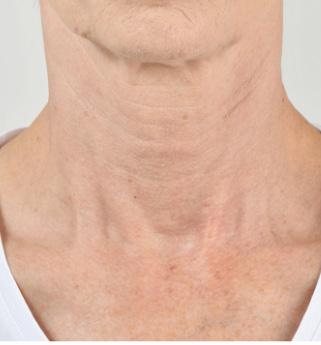
Figure 3: A 52-year-old patient before and after three polynucleotide treatments in the neck every four weeks using polynucleotide gel. Stimulating the skin
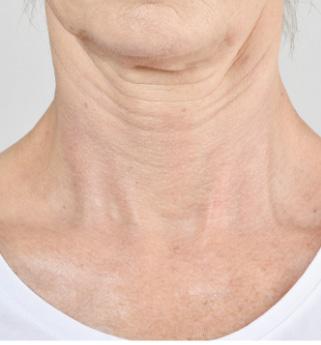
Gel containing polynucleotides is a safe and efficient method for skin rejuvenation. It improves skin hydration, fights against free radicals and stimulates fibroblast to secrete collagen. No serious side effects have been reported. The most common side effect observed was transient oedema, especially when deposits larger than 0.1ml where left in during one injection.
Dr Agnieszka Surowiecka is a general surgeon working in the field of aesthetics and regenerative medicine with a doctorate in plastic surgery, plastic surgery resident. She graduated from Warsaw Medical University in 2012 and has contributed to several national and international studies in regenerative medicine and dressings. Dr Surowiecka is an international trainer for tissue biostimulators, threads, dermal fillers and autologous cell therapy.
REFERENCES
1. Mekić S, Hamer MA, Wigmann C, Gunn DA, Kayser M, Jacobs LC, Schikowski T, Nijsten T, Pardo LM.
Epidemiology and determinants of facial telangiectasia: a cross-sectional study. J Eur Acad Dermatol
Venereol. 2020 2. Kim EH, Kim YC, Lee ES, Kang HY. The vascular characteristics of melasma. J Dermatol Sci. 2007 3. Cotofana S, Fratila A, Schenck T, Redka-Swoboda W, Zilinsky I, Pavicic T., The Anatomy of the Aging
Face: A Review Facial Plast Surg 2016 4. Zoumalan RA , LarrabeeWF Anatomic Considerations in the Aging Face Facial Plast Surg 2011; 5. Mendelson, B, Wong. C “I Aesthetic Surgery of the Face 6 Anatomy of the aging face, 2012 6. Alghoul M, Codner MA, Retaining Ligaments of the Face: Review of Anatomy and Clinical
Applications , Aesthetic Surgery Journal, Volume 33, Issue 6, 1 August 2013 7. Kim, J.H., Kwon, T., Lee, S.E. et al. Comparative Evaluation of the Effectiveness of Novel Hyaluronic
Acid-Polynucleotide Complex Dermal Filler. Sci Rep 2020 8. Park K.Y., Seok J., Rho N.K., Kim B.J., Kim M.N. Long-chain polynucleotide filler for skin rejuvenation: efficacy and complications in five patients. Dermatol Ther 2016 9. Galeano M., Bitto A., Altavilla D., Minutoli L., Polito F. et al. Polydeoxyribonucleotide stimulates angiogenesis and wound healing in the genetically diabetic mouse. Wound Repair Regen. 2008, 16, 208-217Iorizzo M., De Padova M.P., Tosti A. Biorejuvenation: theory and practice. Clin Dermatol 2008 10. Ye J.L., Hak T.K., You J.L., Seung H.P., Young S.
M. et al. Comparison of the effects of polynucleotide and hyaluronic acid fillers on periocular rejuvenation: a randomized, double-blind, split-face trial, J Dermatol Treatment 2020 11. Bertucci V, Lynde CB. Current Concepts in the Use of Small-Particle Hyaluronic Acid. Plast Reconstr
Surg. 2015 12. Sturm LP, Cooter RD, Mutimer KL, Graham JC, Maddern GJ. A systematic review of dermal fillers for age-related lines and wrinkles. ANZ J Surg. 2011 13. de Almeida AT, Figueredo V, da Cunha ALG, Casabona G, Costa de Faria JR, Alves EV, Sato M,
Branco A, Guarnieri C, Palermo E. Consensus Recommendations for the Use of Hyperdiluted
Calcium Hydroxyapatite (Radiesse) as a Face and Body Biostimulatory Agent. Plast Reconstr Surg
Glob Open. 2019 14. Horwacik, Irena, et al. “Structural basis of GD2 ganglioside and mimetic peptide recognition by 14G2a antibody.” Molecular & Cellular Proteomics, 2015 15. Kandhari R, Kaur I, Sharma D. Mesococktails and mesoproducts in aesthetic dermatology. Dermatol
Ther. 2020 16. Iorizzo M., De Padova M.P., Tosti A. Biorejuvenation: theory and practice. Clin Dermatol 2008 17. Squadrito F., Bitto A., Irrera N., Pizzino G., Pallio G. et al. Pharmacological Activityand Clinical Use of
PDRN, Front. Pharmacol, 2017 ront Pharmacol. 2017 18. Cavallini M., Papagni M. Long chain polynucleotides gel and skin biorevitalization, J Plastic Dermatol 2007 19. Hinz B. The role of myofibroblasts in wound healing, Curr Res Transl Med 2016 20. Polito, F., Bitto, A., Galeano, M., Irrera, N., Marini, H. et al. Polydeoxyribonucleotide restores blood flow in an experimental model of ischemic skin flaps. J Vascular Surg 2012 21. Chung K.I., Kim H.K., Kim W.S., Bae T.H. The effects of polydeoxyribonucleotide on the survival of random pattern skin flaps in rats. Arch Plast Surg 2013 22. Bitto A., Galeano M., Squadrito F., Minutoli L., Polito F. et al. Polydeoxyribonucleotide improves angiogenesis and wound healing in experimental thermal injury. Crit Care Med 2008 23. Amorosa A., Di Pasquale B., Clemencia O. Cutaneous biorestructuration with polynucleotide-based intradermal gel: clinical experience and pilot study; AAAM 2020 24. Cavallini, M., Bartoletti, E., Maioli, L., Massirone, A., Pia Palmieri, I., Papagni, M., Priori, M., & Trocchi, G. (2020). Consensus report on the use of PN‐HPT™ (polynucleotides highly purified technology) in aesthetic medicine. Journal of Cosmetic Dermatology, 25. Cillard J., Cillard P., Ranson M. Prooxidant effect of alpha-tocopherol on essential fatty acids in aqueous media, Ann Nutr Aliment 1980 26. Jeong G.J., Ahn G.R., Park S.J., Hong J.Y., Kim B.J. A randomized, patient/evaluator‐blinded, split‐face study to compare the efficacy and safety of polycaprolactone and polynucleotide fillers in the correction of crow’s feet: The latest biostimulatory dermal filler for crow’s feet. J Cosmet Dermatol. 2020 27. A.Surowiecka,w. Barańska-Rybak, Polinucleotides, Polinucleotides, Functional Medicine and Medical
Aesthethics, 2021
